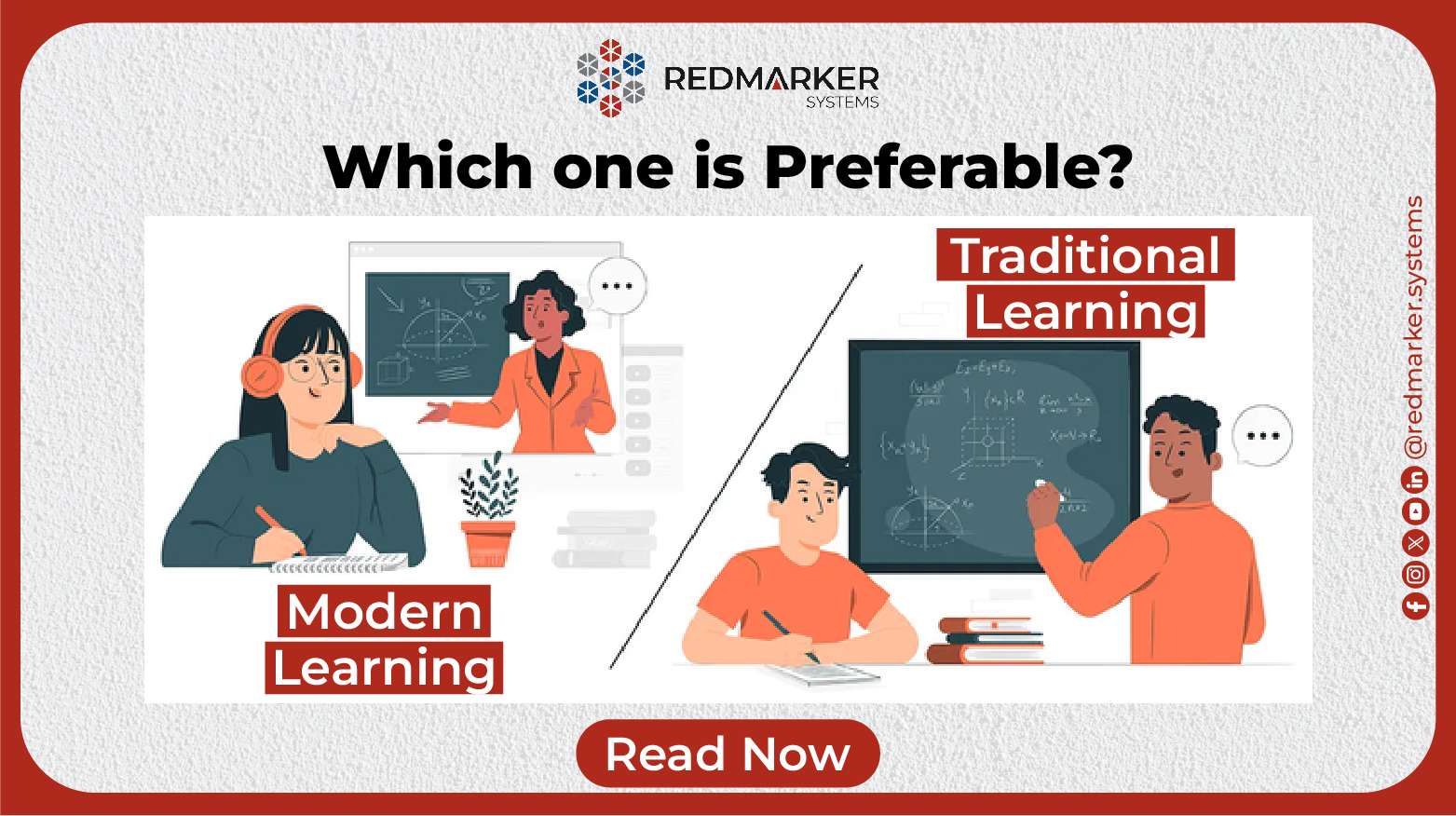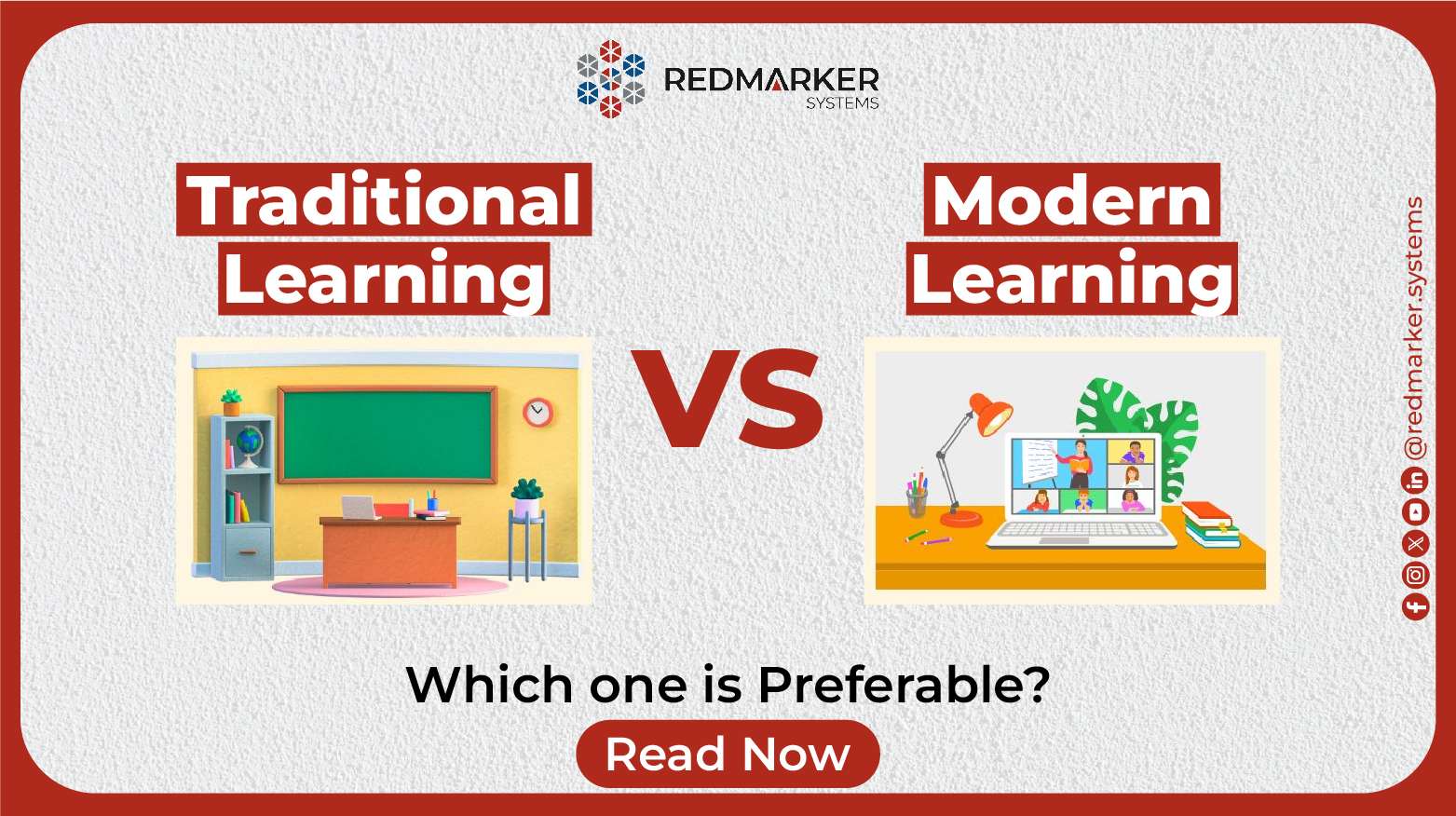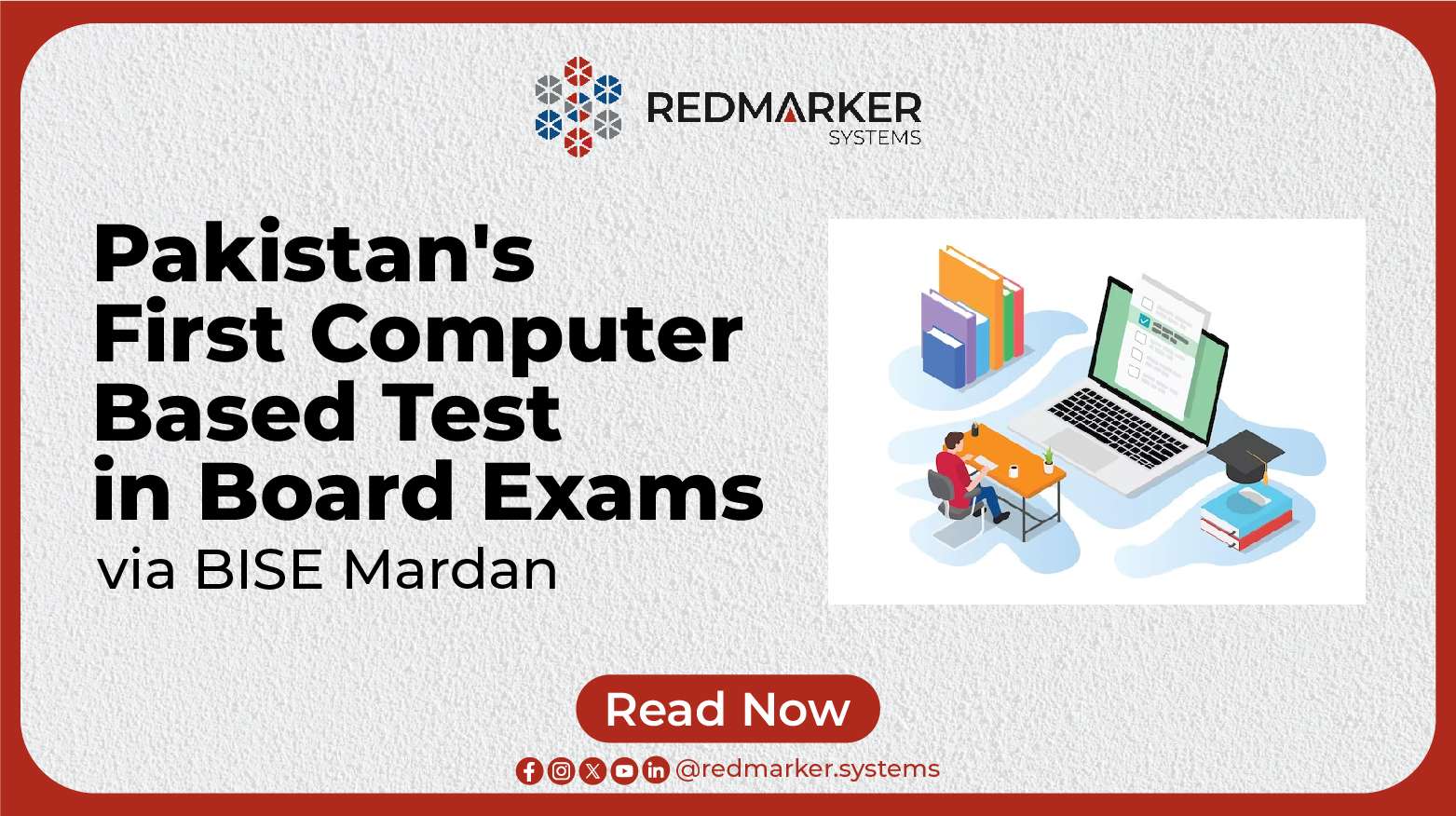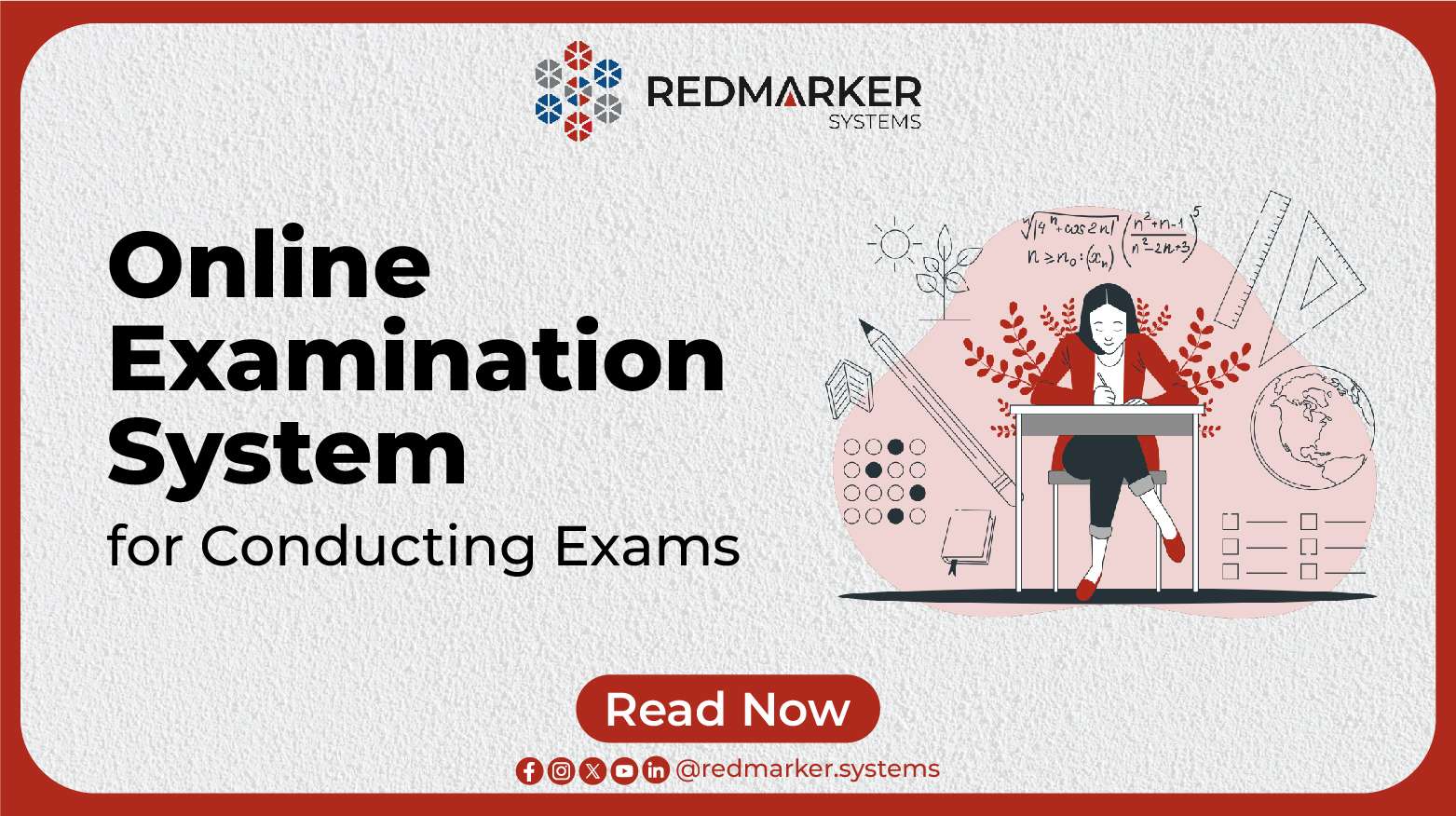Traditional vs Modern learning- Which one is Preferable?
Introduction
In the ever-evolving landscape of education, the debate between traditional and modern learning methods continues to spark discussions. But what exactly do these terms entail, and why does the choice between them matter in today’s world?
Traditional Learning Methods
Traditional learning methods encompass the age-old practices of education delivery. Think classroom-based learning, textbooks, and the sage-on-the-stage teaching approach. While this method has been the cornerstone of education for centuries, it’s not without its limitations.
Classroom-based Learning
The quintessential image of rows of desks facing a teacher at the front of the room defines classroom-based learning. This setup facilitates direct interaction between students and teachers, allowing for real-time feedback and clarification.
Teacher-centered Approach
In traditional settings, the teacher holds the reins, dictating the pace and content of the lesson. While this structure ensures consistency, it may not cater to individual learning needs or preferences.
Modern Learning Methods
On the flip side, modern learning methods leverage technology to revolutionize the educational experience. From online courses to interactive simulations, the possibilities are endless.
Online Learning Platforms
The advent of the internet has democratized education, making knowledge accessible to anyone with a Wi-Fi connection. Platforms like Coursera, Khan Academy, and Udemy offer a plethora of courses spanning various subjects and skill levels.
Interactive and Personalized Learning
Modern learning methods prioritize customization, allowing learners to chart their educational journey. Adaptive learning algorithms tailor content to individual strengths and weaknesses, ensuring maximum retention.

Comparison Between Traditional and Modern Learning
So, which approach reigns supreme? Let’s break it down.
Flexibility and Convenience
One of the most significant advantages of modern learning is its flexibility. Learners can access course materials anytime, anywhere, making education accessible to busy professionals and full-time parents alike.
Customization and Personalization
Traditional learning often adopts a one-size-fits-all approach, leaving little room for customization. In contrast, modern learning platforms empower learners to tailor their experiences to suit their unique learning styles and pace.
Access to Resources
The internet is a treasure trove of information, offering a vast array of resources at our fingertips. Modern learners can tap into a wealth of multimedia content, from videos and podcasts to interactive simulations and virtual reality experiences.
Student Engagement and Interaction
One criticism of traditional learning is its passive nature. Students may find themselves nodding off during lectures or zoning out during group discussions. Modern learning, on the other hand, fosters active engagement through gamified quizzes, collaborative projects, and discussion forums.
Effectiveness in Knowledge Retention
At the end of the day, the ultimate measure of an educational method’s efficacy lies in its ability to impart knowledge that sticks. While traditional methods have stood the test of time, modern approaches boast higher retention rates thanks to interactive exercises and spaced repetition techniques.
Factors Influencing Preference
The choice between traditional and modern learning isn’t always clear-cut. Several factors come into play, shaping individuals’ preferences and attitudes toward different educational methods.
Generation Gap
Generational differences play a significant role in shaping attitudes toward education. Older generations may cling to traditional methods out of familiarity and nostalgia, while younger generations embrace modern technologies with open arms.
Technological Advancements
The rapid pace of technological advancements has transformed the way we learn and interact with information. As technology continues to evolve, so too will our educational methods, blurring the lines between traditional and modern learning.
Learning Styles and Preferences
No two learners are alike. Some thrive in a structured classroom environment, while others prefer the flexibility of self-paced online courses. Recognizing and accommodating these differences is key to designing effective learning experiences.
Job Market Demands
In today’s fast-paced economy, employers value skills and competencies over credentials. As such, modern learning methods that focus on practical, job-relevant skills are gaining traction in the workforce.
Successful Implementation of Traditional Learning
Take, for instance, the centuries-old apprenticeship model. Craftsmen and artisans have been passing down their skills through hands-on training for generations, a testament to the enduring effectiveness of traditional learning methods.
Case Studies of Effective Modern Learning Methods
On the modern end of the spectrum, companies like Duolingo have revolutionized language learning through gamified mobile apps. By incorporating elements of gameplay and competition, Duolingo keeps users engaged and motivated to continue learning.
Conclusion
In conclusion, the debate between traditional and modern learning methods is far from settled. While each approach has its strengths and weaknesses, there’s no one-size-fits-all solution. Instead of pitting one against the other, perhaps the key lies in finding a harmonious balance between the two, leveraging the best of both worlds to create a truly holistic learning experience.
Frequently Asked Questions (FAQs)
1. Are traditional learning methods becoming obsolete?
Traditional learning methods still hold value in certain contexts, particularly for subjects that require hands-on training or face-to-face interaction.
2. Is online learning as effective as classroom-based learning?
Numerous studies have shown that online learning can be just as effective, if not more so, than traditional classroom-based learning, especially when supplemented with interactive elements and personalized feedback.
3. How can I determine which learning method is right for me?
Consider your learning style, schedule, and preferences. Experiment with different methods to see what works best for you.
4. What role does technology play in modern learning?
Technology serves as a powerful enabler, facilitating access to information, customization of content, and interactive learning experiences.
5. Can traditional and modern learning methods coexist?
Absolutely! Rather than viewing them as mutually exclusive, blending traditional and modern learning methods can lead to a more robust and dynamic educational experience.



